The Naguaké Taíno Pictographic Alphabet was created in 2005 by Dr. Yarey Meléndez, one of the principal leaders and teachers of the Naguaké aíno community in Puerto Rico. It is used to write a reconstructed version of the Taino language known as Taíno-Borikenaíki
Taíno people used petroglyphs, images created in rock, as a form of pre-writing or proto-writing. They appear on cave walls, large rocks in river beds, and on stone monoliths. These glyphs are human and animals figures, and abstract shapes. This alphabet is based partly on them.
See some examples of Taíno petroglyphs.
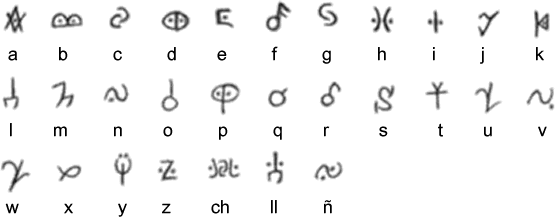
Download a font for the Naguaké Taíno Pictographic Alphabet (created by Simon Ager)
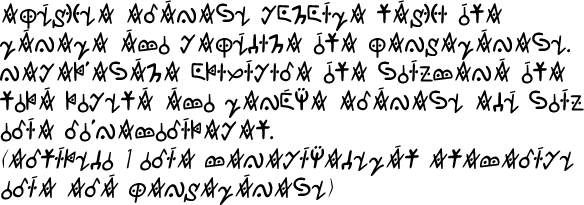
A recording of this text by Javier A. Hernández
Apúshua aránagu jemeíwa táshi óta wánawa ábo japúlima óta pansawánagu. Najak’agáma ekixíjira óta goízbaná óta toká kojutá ábo wanéya aránagu alú goíz oría ro’naboríkajat.
(Artíkulo 1 oría Banajíyaluwát Atabaríju oría Ará Pansawánagu)
All human beings are born free and equal in dignity and rights. They are endowed with reason and conscience and should act towards one another in a spirit of brotherhood.
(Article 1 of the Universal Declaration of Human Rights)
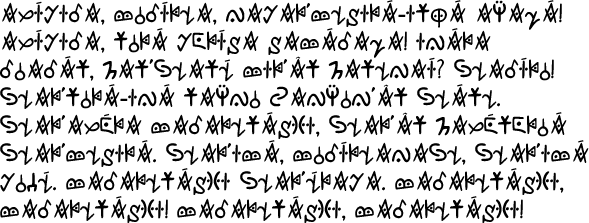
Axíjira, boríkua, Najak’busiká-itpá ayawá! Axíjira, toká jekísa sabárawa! Ináka roarát, mat’guatú Bik’ât matunaí? Guaríko! Guak’toká-iná tayno canyon’ât guátu. Guak’axéka barakutáshi, Guak’ât maxétekoá Guak’busiká. Guak’ibá, boríkuanagu, Guak’ibá jolú. Barakutáshi Guak’úkaja. Barakutáshi, Barakutáshi! Barakutáshi, Barakutáshi!
A recording of this text by Javier A. Hernández
Taíno-Borikenaíki is a reconstructed and modern variant of Taíno, an Arawakan language spoken in much of the Greater Antilles at the time of European Exploration and Conquest of the Americas. It was reconstructed by Javier A. Hernández , a Puerto Rican linguist and polyglot, who spent 15 years working on it and researching it.
Taíno-Borikenaíki is a fusion of Taíno words, prefixes, and grammatical structures with words and grammatical structures of the Wayuu, Garífuna, and Arawak languages. Although the language is called “Taíno-Borikenaíki” due to the large amount of Taíno words and prefixes used that were sourced in Puerto Rico (Borikén), many others call the language “Tainonaíki” due to the use and infusion of other Caribbean Arawak languages and Taíno words from other islands in its lexicon and grammatical structure.
Taíno, or Classical Taíno, is an extinct Arawakan language that was spoken throughout most of the Caribbean, except in western Cuba and parts of Hispaniola. The language was largely replaced by Spanish and other European languages during the 16th century, but was possibly spoken in some isolated areas until the 19th century. Taíno words borrowed into English include barbeque, caiman, cannibal, canoe, cassava, guava, hammock, hurricane, iguana, maize, papaya, potato and tobacco.
Unlike Classical Taíno, which is limited to words and phrases, modern Taíno-Borikenaíki can be learned, written, spoken, and read, thus allowing the Taíno language to be used in the 21st century by anyone wishing to use and learn it.
Taíno-Borikenaíki is taught in schools of the Naguaké Taíno community in Puerto Rico and is promoted by many as a tool of Taíno and Puerto Rican cultural empowerment and national restoration.
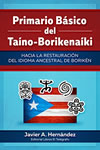
The “Primario Básico del Taíno-Borikenaíki” by Javier A. Hernández is the first book written about the reconstructed Taíno language. It is in Spanish, and details and explains the new grammar, and provides examples of sentences and various vocabulary lists. It is available from:
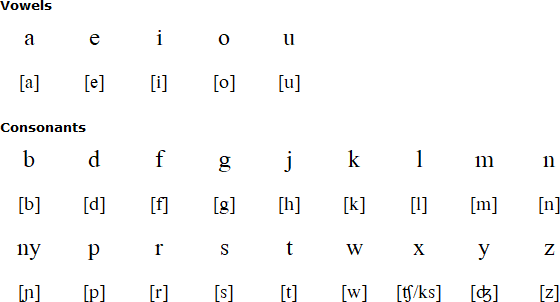
Download an alphabet chart for Taíno-Borikenaík (Excel)
Apúshua aránagu jemeíwa táshi óta wánawa ábo japúlima óta pansawánagu. Najak’agáma ekixíjira óta goízbaná óta toká kojutá ábo wanéya aránagu alú goíz oría ro’naboríkajat.
(Artíkulo 1 oría Banajíyaluwát Atabaríju oría Ará Pansawánagu)
A recording of this text by Javier A. Hernández
All human beings are born free and equal in dignity and rights. They are endowed with reason and conscience and should act towards one another in a spirit of brotherhood.
(Article 1 of the Universal Declaration of Human Rights)
Axíjira, boríkua, Najak’busiká-itpá ayawá! Axíjira, toká jekísa sabárawa! Ináka roarát, mat’guatú Bik’ât matunaí? Guaríko! Guak’toká-iná tayno canyon’ât guátu. Guak’axéka barakutáshi, Guak’ât maxétekoá Guak’busiká. Guak’ibá, boríkuanagu, Guak’ibá jolú. Barakutáshi Guak’úkaja. Barakutáshi, Barakutáshi! Barakutáshi, Barakutáshi!
A recording of this text by Javier A. Hernández
¡Despierta borinqueños,
que han dado la señal!
¡Despierta de ese sueño
que es hora de luchar!
A ese llamar patriótico,
¿no are tu corazón?
¡Ven! nos será simpático
el ruido del cañón.
Nosotros queremos
la libertad,
nuestros machetes
nos la dará.
Vámonos borinqueños,
vámonos ya.
Que nos espera anciosa,
anciosa la libertad.
¡La libertad! ¡la libertad!
Source: https://en.wikipedia.org/wiki/La_Borinqueña
Details of Taíno-Borikenaík provided by Javier A. Hernández
Information about Taino | Phrases (in Taíno-Quisqueyanaíqui)
Naguaké Taíno Pictographic Alphabet | Tainonaíki Alphabet
Constructed scripts for: Ainu | Arabic | Chinese languages | Dutch | English | Hawaiian | Hungarian | Japanese | Korean | Lingala | Malay & Indonesian | Persian | Tagalog / Filipino | Russian | Sanskrit | Spanish | Taino | Turkish | Vietnamese | Welsh | Other natural languages | Colour-based scripts | Tactile scripts | Phonetic/universal scripts | Constructed scripts for constructed languages | Adaptations of existing alphabets | Fictional alphabets | Magical alphabets | A-Z index | How to submit a constructed script
[top]
You can support this site by Buying Me A Coffee, and if you like what you see on this page, you can use the buttons below to share it with people you know.

If you like this site and find it useful, you can support it by making a donation via PayPal or Patreon, or by contributing in other ways. Omniglot is how I make my living.
Note: all links on this site to Amazon.com, Amazon.co.uk
and Amazon.fr
are affiliate links. This means I earn a commission if you click on any of them and buy something. So by clicking on these links you can help to support this site.
[top]